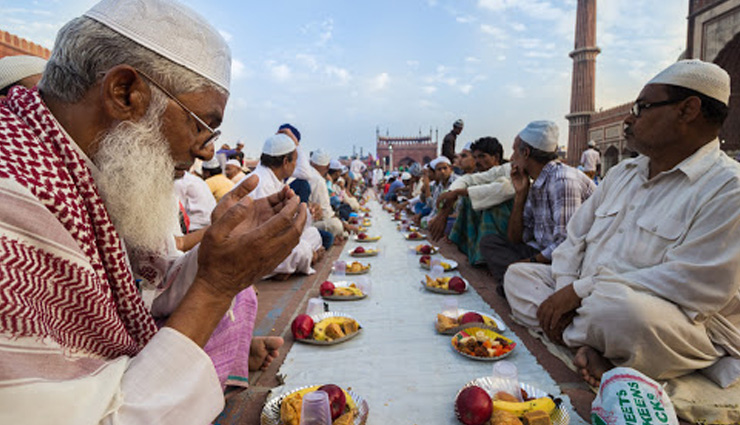5 Ramadan Traditions From Around The World
By: Priyanka Maheshwari Mon, 11 May 2020 12:22:51

Ramadan is much more than a fasting period: it is a holy month rooted in culture, faith and history. Across the globe, Muslims mark this time with vibrant celebrations that are unique to their region and passed on through generations.
Celebrated by millions of Muslims across the globe, Ramadan is observed every year during the ninth month of the Islamic lunar calendar. Taking place for approximately 30 days depending on the sighting of the new moon – it marks the month that the Quran was revealed to the Prophet Muhammad in AD 610. One of the five pillars of Islam and mandatory for all able-bodied Muslims, the holy month is marked with shared traditions such as fasting, charity and prayer, as well as practices that vary from culture to culture, from bathing rituals in Indonesia to lantern-lighting in Egypt. Here, Culture Trip contributors discuss how Ramadan is celebrated in countries around the world.

* A cleansing ritual marks Ramadan in Indonesia
Across Indonesia, Muslims conduct different rituals to ‘cleanse’ themselves on the day before Ramadan. Several localities in Central and East Java keep a purifying tradition called padusan (meaning ‘to bathe’ in Javanese dialect), in which Javanese Muslims plunge themselves in springs, soaking their bodies from head to toe.
Padusan is a testament to the synthesis of religion and culture in Indonesia. Springs hold deep spiritual significance in Javanese culture and are an integral part of purification for the holy month. This practice is believed to have been spread by Wali Songo, a group of revered priests who were the first missionaries to communicate Islamic teachings throughout Java. Years ago, it was common practice for local elders and religious leaders to pick and assign sacred springs for padusan. Nowadays, many just go to nearby lakes and swimming pools, or purify themselves in their own homes.
* Cannons fire for iftar in Lebanon
In many countries across the Middle East, cannons are fired daily during the month of Ramadan to signal the end of the day’s fast. This tradition, known as midfa al iftar, is said to have begun in Egypt over 200 years ago, when the country was governed by Ottoman ruler Khosh Qadam. While testing a new cannon at sunset, Qadam accidentally fired it, and the sound that reverberated throughout Cairo prompted many civilians to assume that this was a new way to signal the end of the fast. Many thanked him for his innovation, and his daughter, Haja Fatma, urged him to make this a tradition.
The practice made its way to many countries across the Middle East including Lebanon, where cannons were used by the Ottomans to mark iftar all over the country. The tradition was feared lost in 1983 after an invasion that led to the confiscation of some of the cannons – then considered weapons. But it was revived by the Lebanese Army following the war and continues even today, evoking nostalgia among older generations who can remember the Ramadans of their childhood.

* Children sing for sweets in the UAE
Often compared to the Western custom of trick-or-treating, the tradition of haq al laila takes place on the 15th of sha’ban, the month before Ramadan. Shared by many countries across the Gulf, this day sees children roaming their neighbourhoods dressed in bright clothing, collecting sweets and nuts in tote bags known as kharyta – all while singing traditional local songs. The chant Aatona Allah Yutikom, Bait Makkah Yudikum, which translates from Arabic to ‘Give to us and Allah will reward you and help you visit the House of Allah in Mecca’, reverberates through the streets as children excitedly collect their bounty.
In the United Arab Emirates, this celebration is considered integral to Emirati national identity. In today’s modern society, which is often said to be more isolated and individualistic, this celebration offers a return to simpler times and highlights the importance of strong societal bonds and family values.
* Women come together on the eve of Eid in Pakistan
As the sighting of the new moon marks the end of Ramadan and the start of Eid-al-Fitr, so begin the Chaand Raat festivities in Pakistan. After their final iftar, droves of women and girls flock to the local bazaars to buy colourful bangles and to paint their hands and feet with intricate henna designs.
In light of this tradition, shopkeepers decorate their stalls and stay open until the early hours of the morning. Local women set up makeshift henna shops close to the jewellery stores, so that they can attract customers out shopping and apply henna on the spot. The atmosphere in the crowded markets on Chaand Raat is one of community spirit, lively and jubilant in anticipation of Eid the following day.
* Morocco’s town criers perform prayers at dawn
During Ramadan, Morocco’s neighbourhoods are roamed by the nafar – a town crier who, donning the traditional attire of a gandora, slippers and a hat, marks the start of dawn with his melody. Selected by the townspeople for his honesty and empathy, the nafar walks down the street while blowing a horn to wake them up for suhoor.
This tradition, which spread across the Middle East to Morocco, dates back to the seventh century, when a companion of the Prophet Muhammad would roam the streets at dawn singing melodious prayers. When the nafar’s music sweeps through the town, it is met with gratitude and thanks, and he is officially compensated by the community on the last night of Ramadan.





